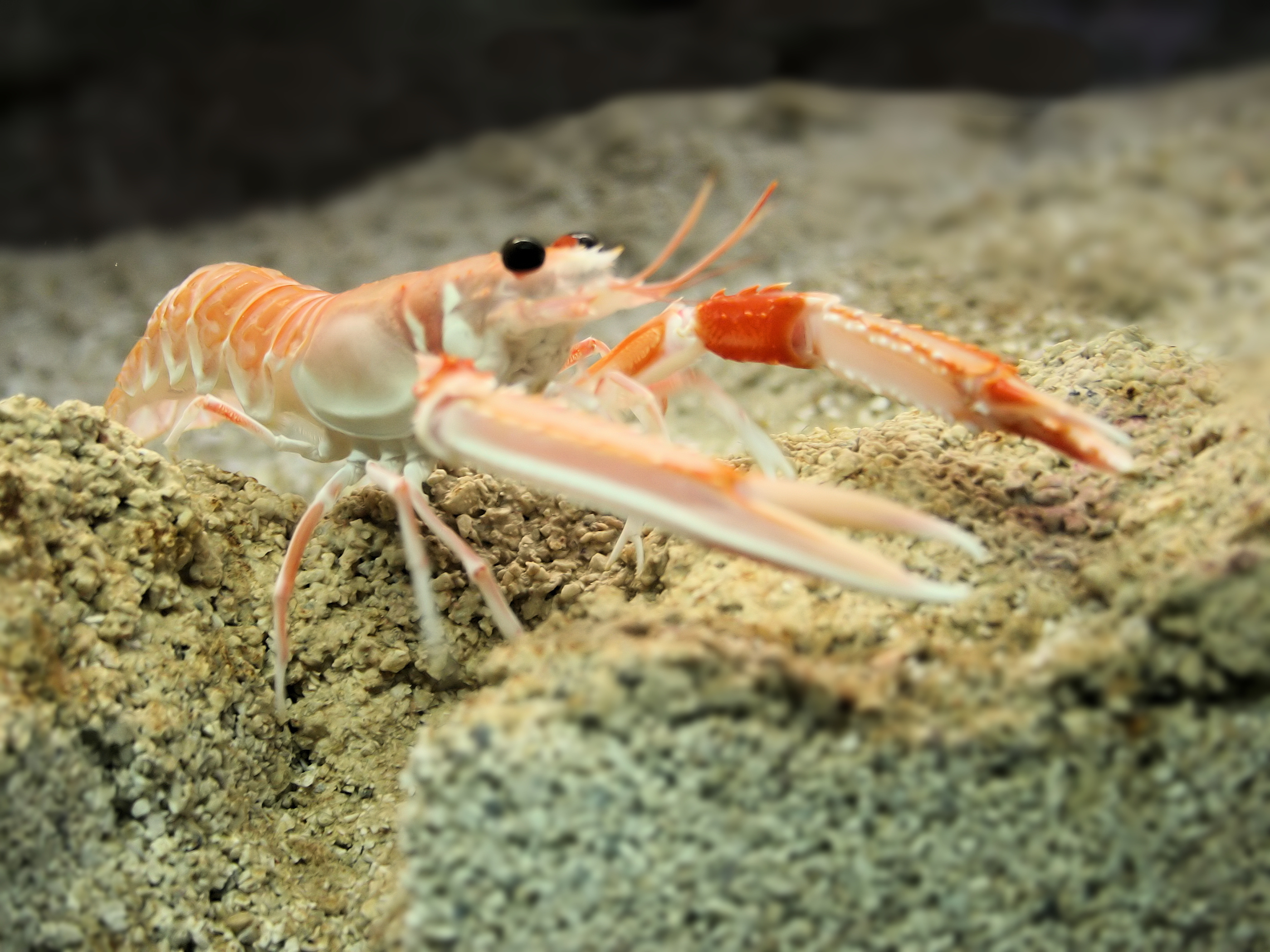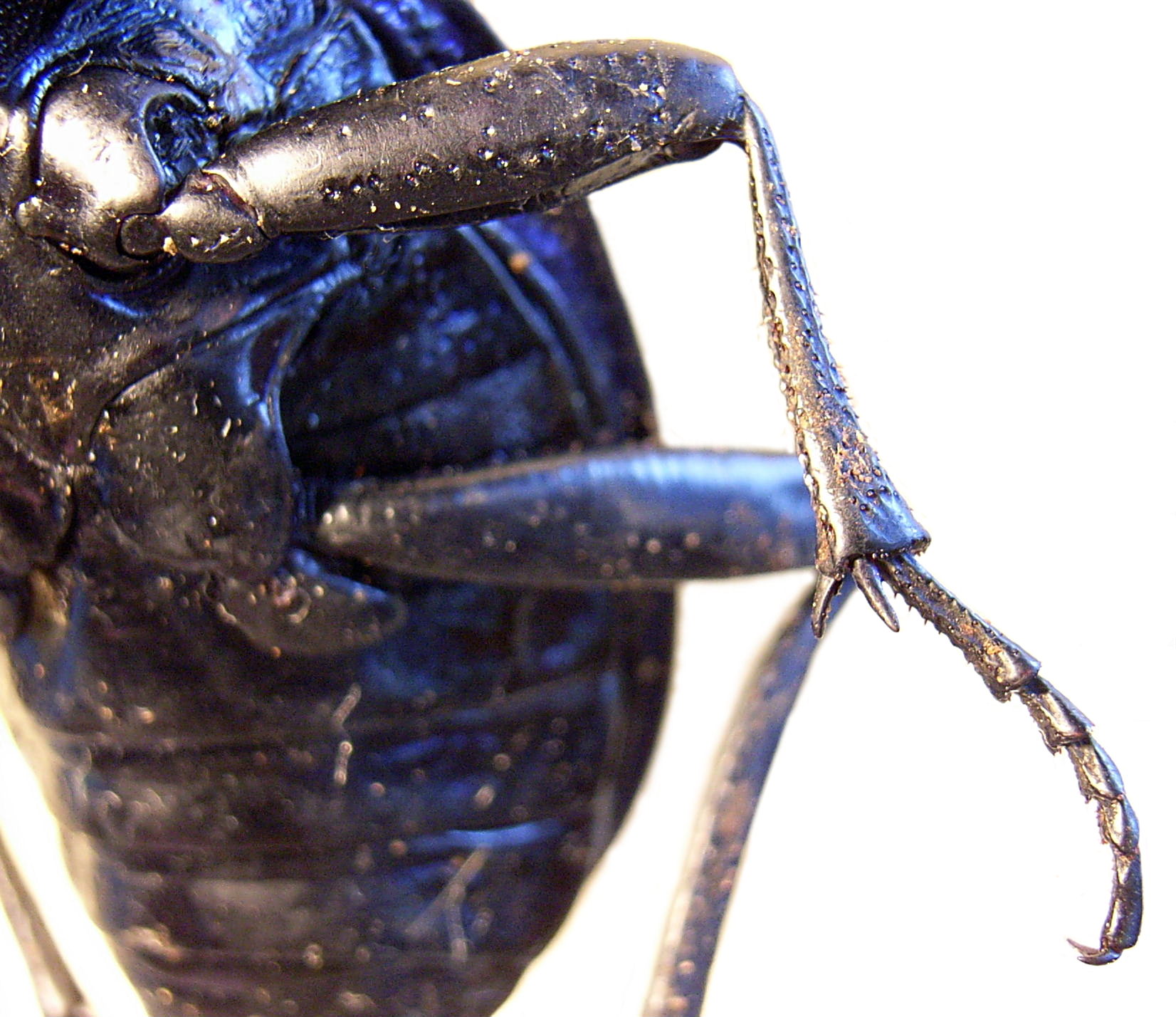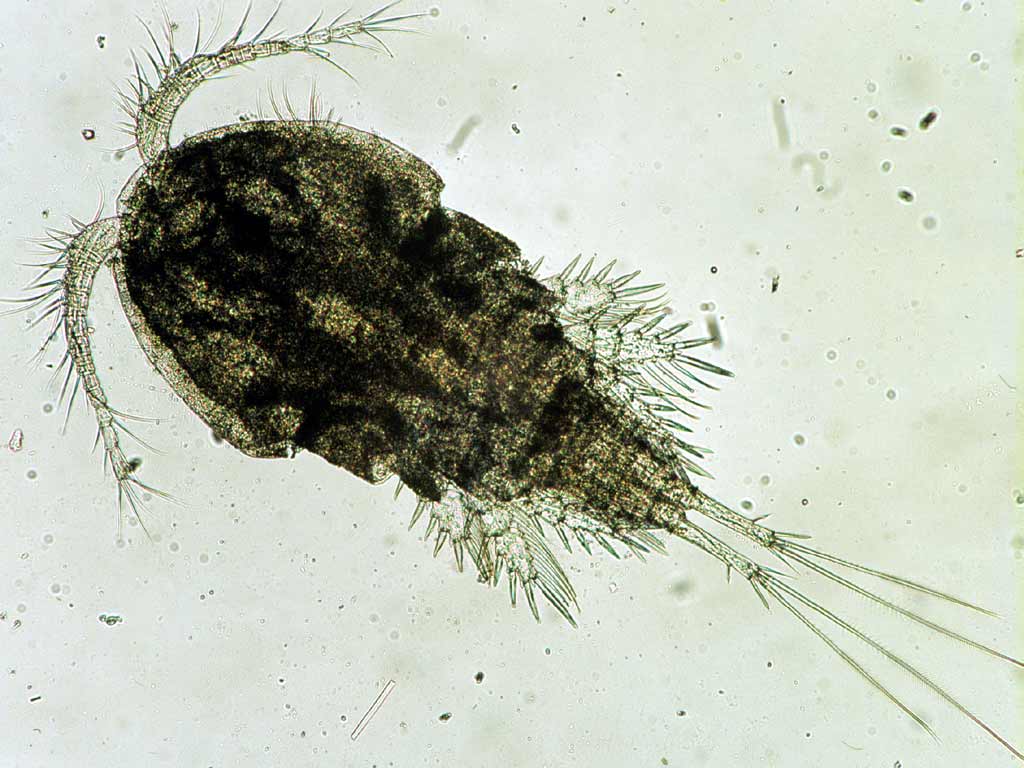|
Uropod
Uropods are posterior appendages found on a wide variety of crustaceans. They typically have functions in locomotion. Definition Uropods are often defined as the appendages of the last body segment of a crustacean. An alternative definition suggested by Frederick R. Schram restricts the term to those structures arising from the segment before the anal segment (the segment which carries the anus). Under this latter definition, the appendages of the anal segment are caudal ramus, caudal rami, which are analogy (biology), analogous to uropods. Form Uropods are typically biramous – comprising an endopod and an exopod. The exopod is typically the larger, and may be divided in two by a transverse suture known as the diaeresis. The uropods may work in concert with the telson to form a "tail fan". References {{Reflist, 32em Crustacean anatomy ... [...More Info...] [...Related Items...] OR: [Wikipedia] [Google] [Baidu] |
Mammalian
A mammal () is a vertebrate animal of the Class (biology), class Mammalia (). Mammals are characterised by the presence of milk-producing mammary glands for feeding their young, a broad neocortex region of the brain, fur or hair, and three Evolution of mammalian auditory ossicles, middle ear bones. These characteristics distinguish them from reptiles and birds, from which their ancestors Genetic divergence, diverged in the Carboniferous Period over 300 million years ago. Around 6,640 Neontology#Extant taxon, extant species of mammals have been described and divided into 27 Order (biology), orders. The study of mammals is called mammalogy. The largest orders of mammals, by number of species, are the rodents, bats, and eulipotyphlans (including hedgehogs, Mole (animal), moles and shrews). The next three are the primates (including humans, monkeys and lemurs), the Artiodactyl, even-toed ungulates (including pigs, camels, and whales), and the Carnivora (including Felidae, ... [...More Info...] [...Related Items...] OR: [Wikipedia] [Google] [Baidu] |
Leukocyte
White blood cells (scientific name leukocytes), also called immune cells or immunocytes, are cells of the immune system that are involved in protecting the body against both infectious disease and foreign entities. White blood cells are generally larger than red blood cells. They include three main subtypes: granulocytes, lymphocytes and monocytes. All white blood cells are produced and derived from multipotent cells in the bone marrow known as hematopoietic stem cells. Leukocytes are found throughout the body, including the blood and lymphatic system. All white blood cells have nuclei, which distinguishes them from the other blood cells, the anucleated red blood cells (RBCs) and platelets. The different white blood cells are usually classified by cell lineage ( myeloid cells or lymphoid cells). White blood cells are part of the body's immune system. They help the body fight infection and other diseases. Types of white blood cells are granulocytes (neutrophils, eosinoph ... [...More Info...] [...Related Items...] OR: [Wikipedia] [Google] [Baidu] |
Langoustine Nephrops Norvegicus 07062010 6
''Nephrops norvegicus'', known variously as the Norway lobster, Dublin Bay prawn, ' (compare langostino) or ''scampi'', is a slim, coral-colored lobster that grows up to long, and is "the most important commercial crustacean in Europe". It is now the only extant species in the genus '' Nephrops'', after several other species were moved to the closely related genus ''Metanephrops''. It lives in the north-eastern Atlantic Ocean, and parts of the Mediterranean Sea, but is absent from the Baltic Sea and Black Sea. Adults emerge from their burrows at night to feed on worms and fish. Description ''Nephrops norvegicus'' has the typical body shape of a lobster, albeit narrower than the larger-bodied genus ''Homarus''. It is pale orange in colour, and grows to a typical length of , or exceptionally long, including the tail and claws. A carapace covers the animal's cephalothorax, while the abdomen is long and segmented, ending in a broad tail fan. The first three pairs of legs bear cl ... [...More Info...] [...Related Items...] OR: [Wikipedia] [Google] [Baidu] |
Appendage
An appendage (or outgrowth) is an external body part or natural prolongation that protrudes from an organism's body such as an arm or a leg. Protrusions from single-celled bacteria and archaea are known as cell-surface appendages or surface appendages. In many kinds of eukaryotic cells, the protrusions are known as membrane protrusions or cell appendages (examples include microvilli and cilia). Types in animals In arthropods, an appendage refers to any of the homologous body parts that may extend from a body segment, including antennae, mouthparts (including mandibles, maxillae and maxillipeds), gills, locomotor legs ( pereiopods for walking, and pleopods for swimming), sexual organs ( gonopods), and parts of the tail (uropods). Typically, each body segment carries one pair of appendages. An appendage which is modified to assist in feeding is known as a maxilliped or gnathopod. In annelids lateral protrusions from the body are called parapodia. In echinoderms ... [...More Info...] [...Related Items...] OR: [Wikipedia] [Google] [Baidu] |
Crustacean
Crustaceans (from Latin meaning: "those with shells" or "crusted ones") are invertebrate animals that constitute one group of arthropods that are traditionally a part of the subphylum Crustacea (), a large, diverse group of mainly aquatic arthropods including decapods (shrimps, prawns, crabs, lobsters and crayfish), seed shrimp, branchiopods, fish lice, krill, remipedes, isopods, barnacles, copepods, opossum shrimps, amphipods and mantis shrimp. The crustacean group can be treated as a subphylum under the clade Mandibulata. It is now well accepted that the hexapods (insects and entognathans) emerged deep in the Crustacean group, with the completed pan-group referred to as Pancrustacea. The three classes Cephalocarida, Branchiopoda and Remipedia are more closely related to the hexapods than they are to any of the other crustaceans ( oligostracans and multicrustaceans). The 67,000 described species range in size from '' Stygotantulus stocki'' at , to the Japanese ... [...More Info...] [...Related Items...] OR: [Wikipedia] [Google] [Baidu] |
Springer Science+Business Media
Springer Science+Business Media, commonly known as Springer, is a German multinational publishing company of books, e-books and peer-reviewed journals in science, humanities, technical and medical (STM) publishing. Originally founded in 1842 in Berlin, it expanded internationally in the 1960s, and through mergers in the 1990s and a sale to venture capitalists it fused with Wolters Kluwer and eventually became part of Springer Nature in 2015. Springer has major offices in Berlin, Heidelberg, Dordrecht, and New York City. History Julius Springer founded Springer-Verlag in Berlin in 1842 and his son Ferdinand Springer grew it from a small firm of 4 employees into Germany's then second-largest academic publisher with 65 staff in 1872.Chronology ". Springer Science+Business Media. In 1964, Springer expanded its business internationally, op ... [...More Info...] [...Related Items...] OR: [Wikipedia] [Google] [Baidu] |
Hydrobiologia
''Hydrobiologia'', ''The International Journal of Aquatic Sciences'', is a peer-reviewed scientific journal publishing 21 issues per year, for a total of well over 4000 pages per year. ''Hydrobiologia'' publishes original research, reviews and opinions investigating the biology of freshwater and marine habitats, including the impact of human activities. Coverage includes molecular-, organism-, community -and ecosystem-level studies dealing with biological research in limnology and oceanography, including systematics and aquatic ecology. In addition to hypothesis-driven experimental research, it presents theoretical papers relevant to a broad hydrobiological audience, and collections of papers in special issues covering focused topics. History ''Hydrobiologia'' changed on the appointment of Henri Dumont to be its editor-in-chief. He introduced peer review, and expanded production from 6 issues per year to more than 20 per year. Koen Martens took over the responsibility as editor-i ... [...More Info...] [...Related Items...] OR: [Wikipedia] [Google] [Baidu] |
Frederick R
Frederick may refer to: People * Frederick (given name), the name Given name Nobility = Anhalt-Harzgerode = * Frederick, Prince of Anhalt-Harzgerode (1613–1670) = Austria = * Frederick I, Duke of Austria (Babenberg), Duke of Austria from 1195 to 1198 * Frederick II, Duke of Austria (1219–1246), last Duke of Austria from the Babenberg dynasty * Frederick the Fair (Frederick I of Austria (Habsburg), 1286–1330), Duke of Austria and King of the Romans = Baden = * Frederick I, Grand Duke of Baden (1826–1907), Grand Duke of Baden * Frederick II, Grand Duke of Baden (1857–1928), Grand Duke of Baden = Bohemia = * Frederick, Duke of Bohemia (died 1189), Duke of Olomouc and Bohemia = Britain = * Frederick, Prince of Wales (1707–1751), eldest son of King George II of Great Britain = Brandenburg/Prussia = * Frederick I, Elector of Brandenburg (1371–1440), also known as Frederick VI, Burgrave of Nuremberg * Frederick II, Elector of Brandenburg (1413–1470), Margr ... [...More Info...] [...Related Items...] OR: [Wikipedia] [Google] [Baidu] |
Anus
In mammals, invertebrates and most fish, the anus (: anuses or ani; from Latin, 'ring' or 'circle') is the external body orifice at the ''exit'' end of the digestive tract (bowel), i.e. the opposite end from the mouth. Its function is to facilitate the defecation, expulsion of wastes that remain after digestion. Bowel contents that pass through the anus include the gaseous flatus and the semi-solid feces, which (depending on the type of animal) include: indigestible matter such as bones, hair pellet (ornithology), pellets, endozoochory, endozoochorous seeds and gastrolith, digestive rocks; Summary at residual food material after the digestible nutrients have been extracted, for example cellulose or lignin; ingested matter which would be toxic if it remained in the digestive tract; excretion, excreted metabolites like bilirubin-containing bile; and dead mucosal epithelia or excess gut bacteria and other endosymbionts. Passage of feces through the anus is typically controlled by ... [...More Info...] [...Related Items...] OR: [Wikipedia] [Google] [Baidu] |
Caudal Ramus
The caudal ramus (plural: ''caudal rami'') is a characteristic feature of primitive crustaceans. Located on the anal somite (telson segment), the caudal ramus is a pair of appendage An appendage (or outgrowth) is an external body part or natural prolongation that protrudes from an organism's body such as an arm or a leg. Protrusions from single-celled bacteria and archaea are known as cell-surface appendages or surface app ...-like or spine-like protrusions. Specific structures which are rod or blade-like are referred to as '' caudal furca''. References *Brusca, Gary J. & Richard C. Brusca, ''Invertebrates''. 2003. Crustacean anatomy {{crustacean-stub ... [...More Info...] [...Related Items...] OR: [Wikipedia] [Google] [Baidu] |
Analogy (biology)
Convergent evolution is the independent evolution of similar features in species of different periods or epochs in time. Convergent evolution creates analogous structures that have similar form or function but were not present in the last common ancestor of those groups. The cladistic term for the same phenomenon is Cladogram#Homoplasies, homoplasy. The recurrent evolution of flight is a classic example, as flying pterygota, insects, birds, pterosaurs, and bats have independently evolved the useful capacity of flight. Functionally similar features that have arisen through convergent evolution are ''analogous'', whereas ''homology (biology), homologous'' structures or traits have a common origin but can have dissimilar functions. Bird, bat, and pterosaur wings are analogous structures, but their forelimbs are homologous, sharing an ancestral state despite serving different functions. The opposite of convergence is divergent evolution, where related species evolve different trai ... [...More Info...] [...Related Items...] OR: [Wikipedia] [Google] [Baidu] |
Biramous
The arthropod leg is a form of jointed appendage of arthropods, usually used for walking. Many of the terms used for arthropod leg segments (called podomeres) are of Latin origin, and may be confused with terms for bones: ''coxa'' (meaning hip, : ''coxae''), ''trochanter'', ''femur'' (: ''femora''), ''tibia'' (: ''tibiae''), ''tarsus'' (: ''tarsi''), ''ischium'' (: ''ischia''), ''metatarsus'', ''carpus'', ''dactylus'' (meaning finger), ''patella'' (: ''patellae''). Homologies of leg segments between groups are difficult to prove and are the source of much argument. Some authors posit up to eleven segments per leg for the most recent common ancestor of extant arthropods but modern arthropods have eight or fewer. It has been argued that the ancestral leg need not have been so complex, and that other events, such as successive loss of function of a ''Hox''-gene, could result in parallel gains of leg segments. In arthropods, each of the leg segments articulates with the next seg ... [...More Info...] [...Related Items...] OR: [Wikipedia] [Google] [Baidu] |





